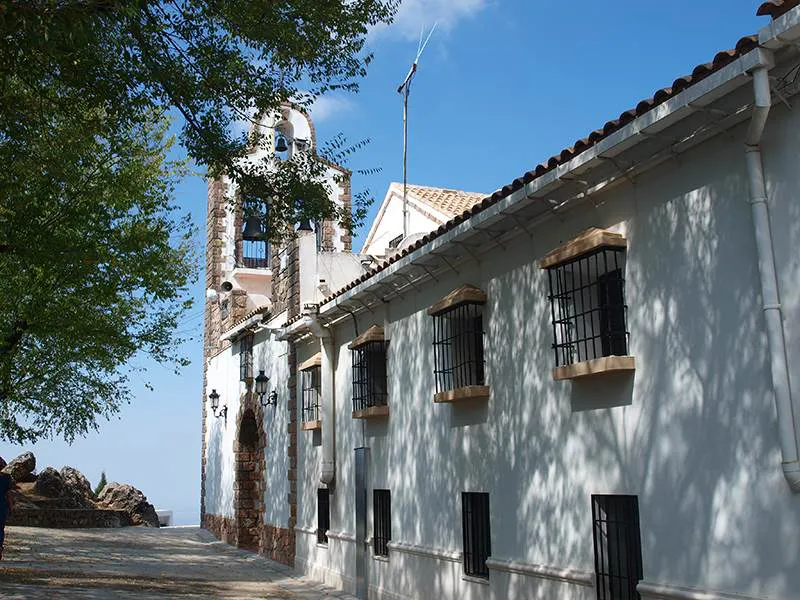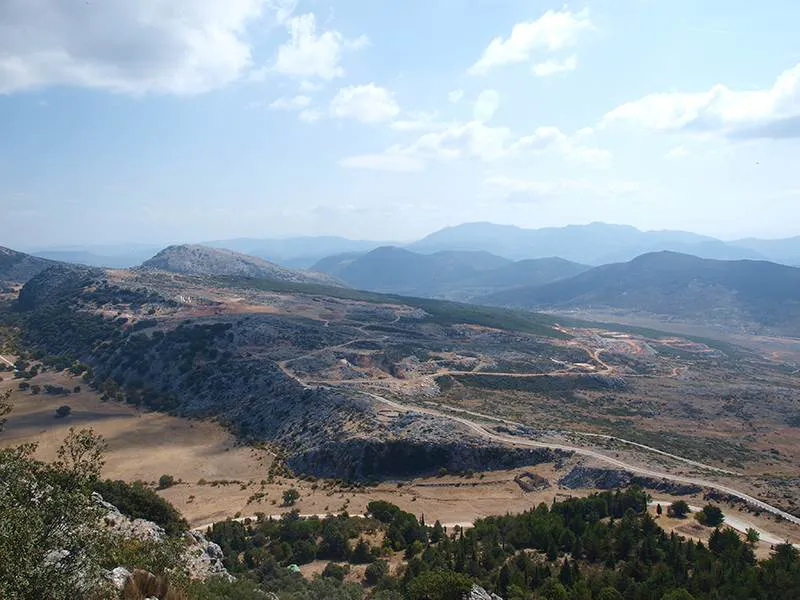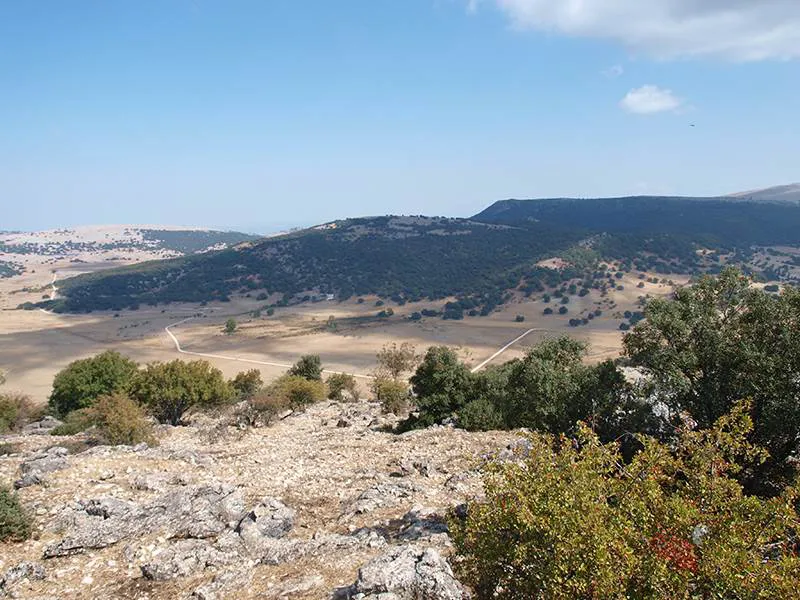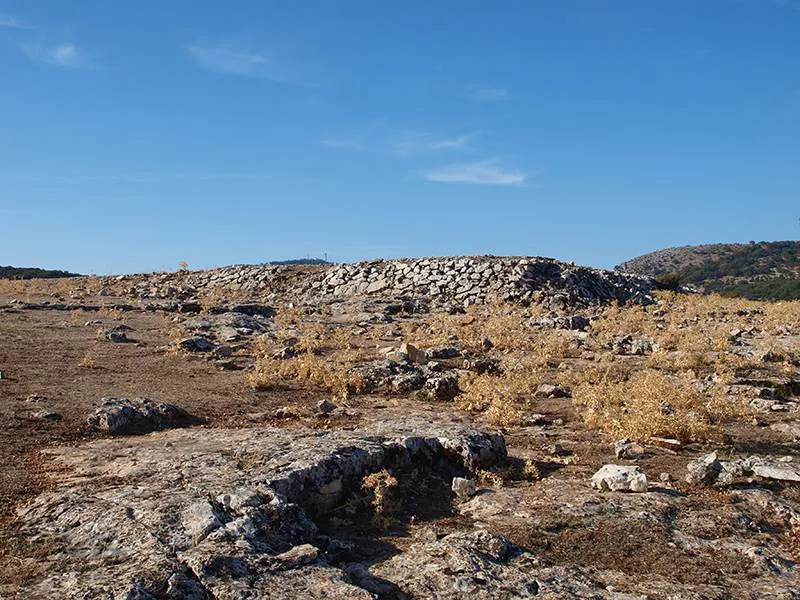The Sierras Subbéticas UNESCO Global Geopark is in the south of Córdoba province. It is 350 sq kms of fantastic karstic formations.
By Nick Nutter | Updated 25 Aug 2022 | Córdoba | Parks |
Login to add to YOUR Favourites or Read Later


Sierra Subbetica Global Geopark
The Sierras Subbéticas UNESCO Global Geopark is a stunningly beautiful part of Andalucia. With only 8 towns surrounding the Sierra and only 350 sq kilometres in extent, you can get to know the whole area in a week.


Sanctuario de la Virgen de la Sierra
250 million years ago, the supercontinent of Pangea split apart forming the Tethys Sea that covered what would become the south-eastern half of the Iberian Peninsula. The Tethys was a warm, tropical sea inhabited by corals and long extinct sea creatures. On its shores and in the north-western part of the Iberian Peninsula, dinosaurs roamed the tropical forests.
During the Triassic period, between 237 and 200 million years ago, an extensive coastal plain developed to the south of the Sierra Morena that was periodically flooded by the sea resulting in deposits of limestone, sand and lutite. These are interspersed with evaporate deposits of gypsum and halite and form the oldest sediments in the Sierra Subbéticas Geopark.
At the beginning of the Jurassic period, between 200 and 145 million years ago, there was a general collapse of the plain and it was once again flooded by the Tethys Sea. During this period the fauna consisted of molluscs such as ammonites and belemnites. Their fossilised remains are one of the wonders of the Geopark and recognised globally.
For 80 million years the sea level rose and fell, and the plain started to break up, resulting in horsts (raised blocks surrounded by faults) and grabens (areas either side of horsts that have sunk). All the outcroppings of carbonate rocks, marls and marly limestone seen today are a result of this complex period of geological activity.
About 50 million years ago, the African and European tectonic plates collided, and the seabed was raised into the air. At the same time the rocks were folded, faulted and fractured. The entire Betic Cordillera emerged at this time.
Since then the carbonate rocks have been exposed to intense karstification, resulting in a beautiful and dramatic landscape dominated by poljes (a small basin with flat floor and steep walls), karrens (small scale naturally sculpted, limestone features, waves, pavements and so on), dolines (sinkholes), canyons, caves and springs.


Sierra Subbetica Global Geopark
The Sierras Subbéticas is under the influence of a continental Mediterranean climate. The vegetation is dominated by holm oak forests with Valencian oak in patches. On higher ground the maquis takes over with broom and thorny scrub. Over 500 species of fungi have been identified including two endemic species of truffle.
The craggy outcrops, cliffs and gorges are home to peregrine falcons, eagle owls, griffon vultures, imperial eagles, Bonelli’s eagle, choughs and rock thrushes as well as sixteen species of bats.
Of the mammalian fauna, polecats, badgers, foxes and rabbits, wild boar and hedgehogs abound. There are innumerable reptiles, turtles, skinks, gecko, snub nosed vipers and lizards inhabiting the rocky and wooded areas, whilst the amphibians, Iberian ribbed newts, Iberian parsley frogs and Spanish painted frogs can be found in the springs and streams.


Sierra Subbetica Global Geopark
In 2011, evidence was found near Lucena in Angel’s Cave of human occupation that could date back 500,000 years, a time when Home heidelbergensis was in Europe, the ancestor of Homo Neanderthalis. Later remains, including Neanderthal and from the Neolithic onwards have been documented at La Cueva de los Murciélagos de Zuheros. The Iberians were followed by the Romans, Visigoths and Moors, all of whom have left evidence of their passage through the region in oppidii, villas, necropolises, castles and towers.


Sierra Subbetica Global Geopark
The eight towns that surround the Subbéticas Geopark, Cabra, Carcabuey, Doña Mencia, Iznajar, Luque, Priego de Córdoba, Rute and Zuheros are all gateways to the area. You will find information at the tourist information offices and the various specialised centres, such as the Mycological Gardens at Aldea de Zagrilla Alta and the Ecomuseum at La Cueva de los Murciélagos at Zuheros. A Via Verde runs down the western side of the Subbetica and there are several walking trails through the massif. The Sanctuario de la Virgen de la Sierra above Cabra is a good place to start for the views and walks.


Sierra Subbetica Global Geopark